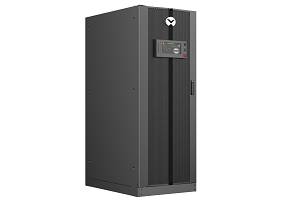The 28th annual SATIS exhibition of audio and video production equipment opened for business at Porte de Versailles, Paris, 19-21 October.
 Notwithstanding a modicum of civil protest at the French government's decision to increase the state pension entitlement age to 62, the event was well attended and even more buoyant than the previous year.
Notwithstanding a modicum of civil protest at the French government's decision to increase the state pension entitlement age to 62, the event was well attended and even more buoyant than the previous year.
SATIS is one of the best organised events in the broadcast trade show calendar:
* It is compact enough to absorb in a day;
* All the big-name core equipment manufacturers (or their French resellers) support the show;
* Transport links to Porte de Versailles are excellent from practically anywhere in Europe;
* The catalogue is thorough yet small enough (20 pages A5) to fold into a shirt or jacket pocket;
* And best of all, the show organisers make some attempt to highlight the latest and greatest kit on show, this year listing 21 products accorded a SATIS trophy. Almost every broadcast exhibition organiser nowadays bestows awards on products or people or both. Here it is done efficiently, credibly and on a generous scale.
Just one critical comment. The SATIS website (www.satis-expo.com) either does not list its exhibitors at all or hides the list so deeply that I for one have not been able to find it. A full list of exhibitors with each company named alongside its URL and kept online until the following year's show is an essential component of any serious trade event.
Before heading into the show-floor melee, it makes sense to mention the products considered good enough to merit a SATIS trophy. The 2010 jury making these awards comprised ten august and independent observers: Olivier Binet, Alain Chaptal, Jean-Christophe Coin, Jaqueline Delaunay, Antoine Gruber, Alann Hery, Gilles Hugo, Patrick Lespagnol, Jean-Baptiste Neyrac and Jacques Pigeon.
AMX HDMI-UTPRO-0808 8 x 8 HDMI matrix switcher,
AVP2 Tools on Air 'TV on a Mac',
Binocle Disparity Tagger 3D visualisation system,
Calrec Artemis audio mixing desk,
Christie MicroTiles modular video wall,
Christie Mirage WU7K-M 3D DLP projector,
Christie Nitro Solutions LED projector,
* Emacatronik Smartflyer six-rotor or 8-rotor helicopter camera support
Euro Light LED Nila Boxer 250 watt lights
Eyevis SAS laser phosphor video display panel
* GoPro SphynX-Cam multi-rotor helicopter camera support
* Panasonic AG-3DA1 stereoscopic camcorder
* Panasonic AG-AF101 interchangeable-lens camcorder
Panasonic AG-HMX 100 HD/SD vision mixer
Panasonic TH-103CX200E 103 inch plasma screen
* Smyth Research SVS Realiser headphone-based surround-sound loudspeaker emulator
Sonnet Fusion RX1600 16-drive RAID fibre-channel data store
Sony MPE-200 HD video processing platform
* Sony PVM-740 7.4 inch 960 x 540 pixel OLED picture monitor
Sound4 L eight-channel audio level processor
Trinnov EBU-R128-compliant audio level processor
A few comments on the asterisked components of this collection. Firstly the multi-rotor helicopters. These are based conceptually on the palm-sized four-rotor miniature indoor radio-controlled models which have been available since about 2007. The camera platforms are designed to do the same job as the petrol-powered model flying camera platforms used occasionally by video production crews to obtain aerial views with the cost and aggravation of hiring a full-size chopper. Several companies have recently begun to compete with these multi-rotor systems which derive their power from rechargeable batteries on the basis of one per motor. They look less lethal than the single-rotor petrol-powered miniature helicopters but, if you are thinking of shooting public-audience events with a flying camera platform, check the local health and safety regulations.
The Panasonic AG-3DA1 attracted a lot of interest when launched in prototype at NAB in April. It is a one-piece 3D camcorder with dual zoom lenses and dual 1920 x 1080 3-MOS imagers. The camcorder captures 1080/60i, 50i, 30p, 25p or 24p (native) and 720/60p or 50p in AVCHD file format. Up to 180 minutes can be recorded to dual hot-swappable 32 gigabyte SD cards in AVCHD PH mode. Interfaces include dual HD-SDI out, HDMI (version 1.4), dual XLR connectors, built-in stereo microphone and twin-lens camera remotes. Convergence adjustment and automatic correction of horizontal and vertical displacement are provided. Power consumption is 16 W, weight is 3 kg and price is 16,800 euro.
Also first shown at NAB, Panasonic's AG-AF101 is a 2D camcorder intended to offset competition from digital SLR cameras which, given their increasingly powerful HD video capture capabilities, have attracted some television programme-makers. The AG-AF101 can record video in 1080/24p, 1080i and 720p formats to dual SDXC memory cards at up to 24 Mbit/s. Storage capacity is up to 12 hours in maximum quality mode. The camcorder incorporates a 4/3 inch MOS sensor to allow wide-angle shooting and shallow depth of field. Frame rate in 1080p mode is selectable in 20 steps from 12p to 60p at 60Hz and 20 steps from 12p to 50p at 50Hz. Price is 4,900 euro. Available from December.
I pass quietly over the SATIS panel's decision to award a trophy to a plasma panel even if 103 inches in size and 3D-capable. Plasmas are much less efficient than LED backlit or fluorescent-backlit LCDs and, unless Panasonic has lately found a cure, prone to image burn-in.
The Smyth SVS Realiser is a technically interesting idea. It is claimed to give an out-of-head audio experience from more or less traditional headphones. The first decent emulator of this kind I ever heard was demonstrated by Studer in the AES Convention in January 2000 (same city but at the Porte Maillot convention centre). This worked by measuring any change in the lateral angle of the listener's head, using a tracking device at the top of the headband. Data from the tracker was used to to remix the Dolby 5.1 surround audio output from a DVD. As simple as that. It worked perfectly. Beyer later demonstrated a similar system a numerous IBC and NAB shows but, for me at least, the illusion was far from perfect. Perhaps the effect is dependent on matching preset parameters to individual head anatomy.
Sony's 7.4 inch Organic-LED (OLED) screen looked beautiful. Each pixel of an OLED generates its own light which means the front-to-back depth can be very small: just a couple of millimetres plus whatever components the manufacturer chooses to direct-mount. OLED production costs are still higher than LED-LCD hybrids and screen-sizes much smaller but this remains a promising technology with obvious applications in devices such as camera viewfinders.
The 3D candle continued to flicker and flare at SATIS 2010 as it has at other broadcast trade shows for the past three or four years. General reaction among almost everyone I spoke to is that 3D will become another niche of the fast-sprouting telecommunications tree rather than becoming the new mainstream. JVC exhibited a prototype DT-3D24G1 24 inch 3D LCD monitor which accepts and processes signals from dual camera systems, stereo-rigs and coded side-by-side and line-by-line 3D signals. A built-in 3D scale function that allows the amount of binocular disparity top be measured (pixels or percentage) in real time. The DT-3D24G1 users circular polarisation can also be battery powered.
Sony Professional demonstrated two additions to its PVM-L series of 2D LCD broadcast monitors. The PVM-L1700 and the PVM-L3200 have 17-inch and 32-inch screens respectively. They can accept analogue composite signals up to 3G SDI, as well as HDMI and DVI signals.
 Gekko Technology introduced the new kezia 200-E multi-colour hard source light which can be dynamically driven to match the rhythm of music shows or the effects requirements of stage and studio productions. Based on Gekko's 'kleer-colour' LED multi-chip array, it is controllable via DMX or an optional rear panel and can be adjusted manually or remotely to produce literally millions of colours. Integral presets allow rapid selection of 2900K, 3200K, 4300K, 5600K and 6500K whites. Colour temperature remains constant even when the light is dimmed. Drawing less than 200 W of power at 24-50 V DC or 90-264 V AC, the kezia 200-E has an output roughly equivalent to a 1 kW tungsten fixture. LHW dimensions are 266 x 323 x 278 mm and weight is 6.9 kg.
Gekko Technology introduced the new kezia 200-E multi-colour hard source light which can be dynamically driven to match the rhythm of music shows or the effects requirements of stage and studio productions. Based on Gekko's 'kleer-colour' LED multi-chip array, it is controllable via DMX or an optional rear panel and can be adjusted manually or remotely to produce literally millions of colours. Integral presets allow rapid selection of 2900K, 3200K, 4300K, 5600K and 6500K whites. Colour temperature remains constant even when the light is dimmed. Drawing less than 200 W of power at 24-50 V DC or 90-264 V AC, the kezia 200-E has an output roughly equivalent to a 1 kW tungsten fixture. LHW dimensions are 266 x 323 x 278 mm and weight is 6.9 kg.
 Blackmagic introduced the Universal Videohub to the French market. Sold in two models of unpopulated rack frames, this allows users to configure their own router up to 288 x 288 in size by adding SDI interface cards. The Universal Videohub also features redundant crosspoint and power cards. The optional Videohub Control for iPad allows Apple's tablet computer to be used as an XY control panel for all Blackmagic Design Videohub series routing switchers.
Blackmagic introduced the Universal Videohub to the French market. Sold in two models of unpopulated rack frames, this allows users to configure their own router up to 288 x 288 in size by adding SDI interface cards. The Universal Videohub also features redundant crosspoint and power cards. The optional Videohub Control for iPad allows Apple's tablet computer to be used as an XY control panel for all Blackmagic Design Videohub series routing switchers.
Melchurch Award
 If I may be permitted to bestow SATIS 2010 Trophy Melchurch, it would go to the NewTek TriCaster Virtual Set Editor (VSE) which enables users of the company's TriCaster TCXD850 and TriCaster TCXD300 platforms to customise template-based live virtual sets with elements such as logos, colour schemes, furniture options and presenter locations. TriCaster VSE is accessed from the TriCaster control panel, using functions such as position, scale, rotation, colour correction (brightness, hue, contrast and saturation), media browser for image selection, and the T-bar to set custom start and end points for zooms. Once a TriCaster virtual set has been customised, it is automatically saved for use in live production. A single operator or small team can switch between multiple cameras, virtual inputs and live virtual sets, while inserting clips, titles and motion graphics with multi-channel effects. Price of the VSE is 895 euro. The TriCaster platform is 5,995 euro.
If I may be permitted to bestow SATIS 2010 Trophy Melchurch, it would go to the NewTek TriCaster Virtual Set Editor (VSE) which enables users of the company's TriCaster TCXD850 and TriCaster TCXD300 platforms to customise template-based live virtual sets with elements such as logos, colour schemes, furniture options and presenter locations. TriCaster VSE is accessed from the TriCaster control panel, using functions such as position, scale, rotation, colour correction (brightness, hue, contrast and saturation), media browser for image selection, and the T-bar to set custom start and end points for zooms. Once a TriCaster virtual set has been customised, it is automatically saved for use in live production. A single operator or small team can switch between multiple cameras, virtual inputs and live virtual sets, while inserting clips, titles and motion graphics with multi-channel effects. Price of the VSE is 895 euro. The TriCaster platform is 5,995 euro.
Rod Melchurch



































